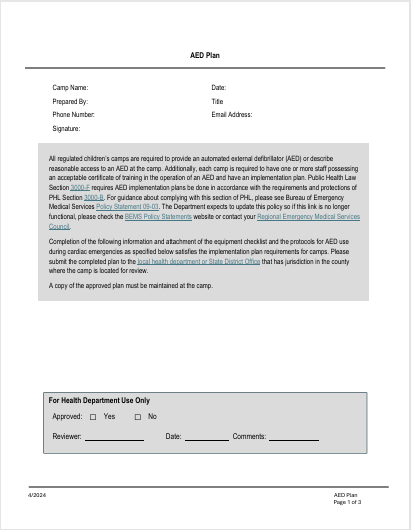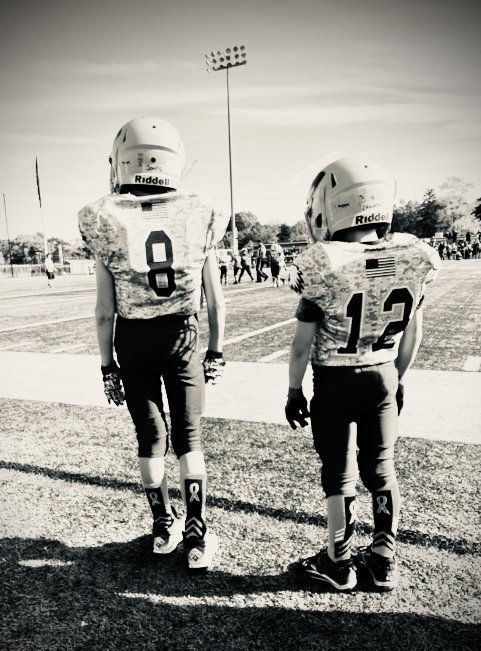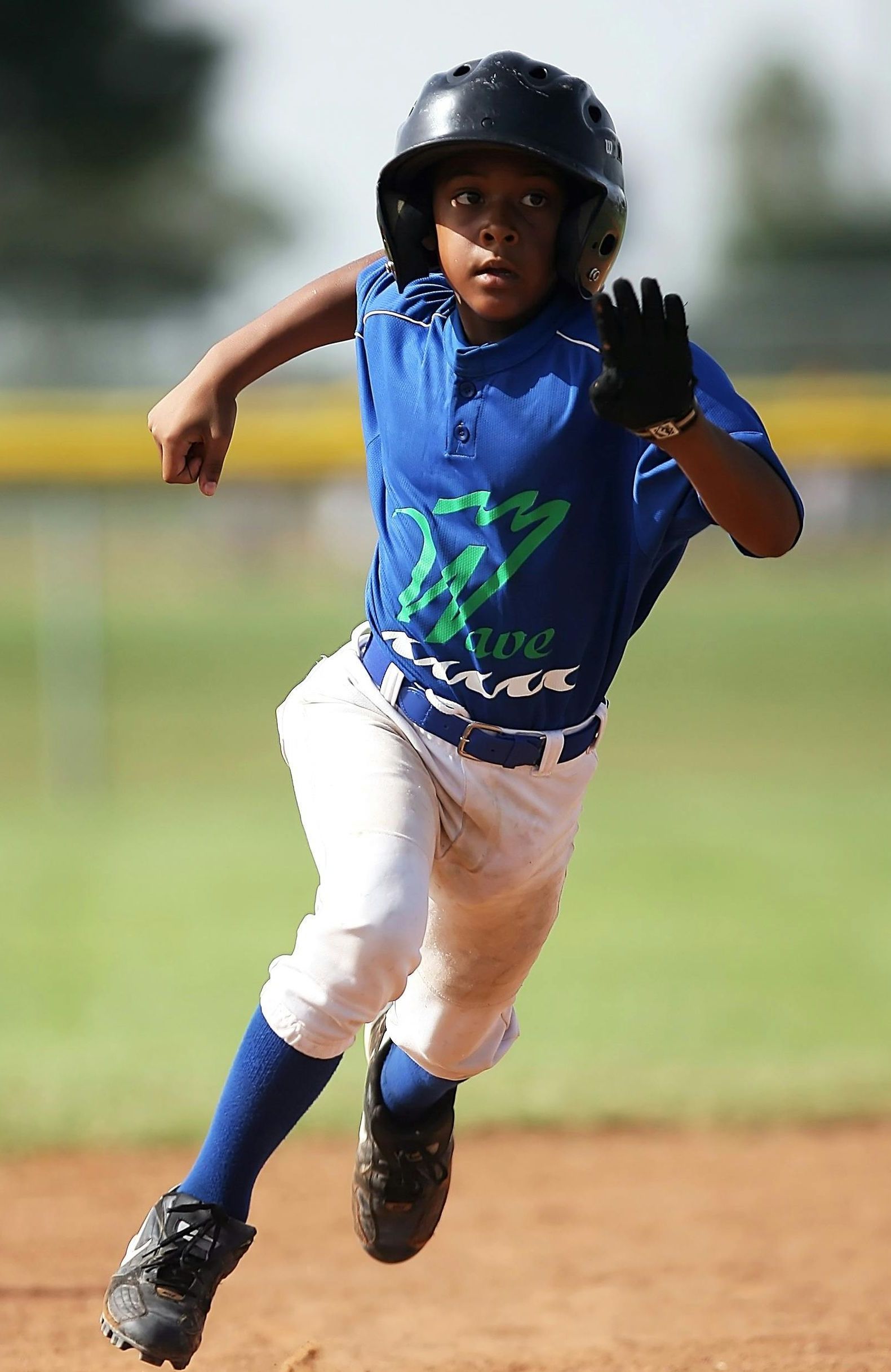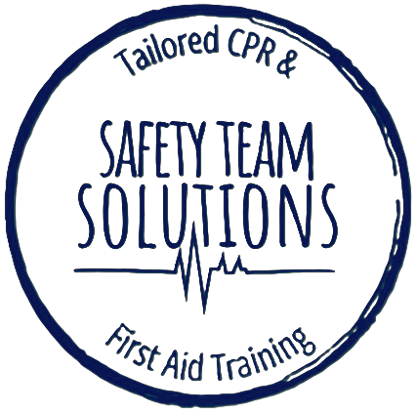Summary of NYS Legislation Requiring AED Plans
for Youth Sports and Camps
In 2023, Governor Hochul of New York, signed legislation S.7424/A.366A, which mandates that youth camp and sports programs create AED (Automated External Defibrillator) Implementation Plans. This law took effect immediately and applies to the 2025 sport seasons.
Essentially, this legislation requires each youth camp and sports program to develop an AED plan. The plan is required to include information about AED accessibility, mandations for certified adults on-site, policies and procedures, record keeping requirements, and notifications. Continue reading for more specific information.
Plan Development
Each youth program is required to develop and submit an Automated External Defibrillator (AED) Implementation Plan to the New York State Department of Health.
AED Accessibility
The AED Plan must detail how an AED will be accessible at every camp, game, or practice.
- The law requires the plan to note the availability of an AED or describe reasonable access to an AED available for use. Reasonable access requires the AED to be in a location always accessible to trained staff during practice, games, or camps.
- Additionally, the location of the AED should be easily identifiable by visible signage (Free signage is available here). Safety Team Solutions also has AED location lawn signs with stakes available for purchase.
- If a game, practice, or camp takes place in a location that provides an AED, and the youth program depends on the facility (such as a school or park) for the AED, the youth program must verify the AED's availability and location, as well as the facility's policies and procedures for its use. Furthermore, the camp or sports program must be informed by the facility if the AED is unavailable for their use.
Certified on-site adults
Youth camps and sports programs are required to have at least one qualified adult (employee, volunteer, coach, umpire, or other qualified adult) available on-site during each camp, game, or practice. Qualified adults are those who have been certified within the past 24 months through a nationally recognized training course approved by the emergency medical services council in the operation of an AED. However, it is recommended multiple adults receive certification and that they renew or review training annually to ensure compliance with requirements.
Per the NYS Bureau of Emergency Medical Services, current approved courses include those provided by:
- American Heart Association
- Emergency University
- American Red Cross
- Medic First Aid International
- American Safety & Health Institute
- National Safety Council
- Emergency Care and Safety Institute
- REMSCO of NYC, Inc
- Emergency First Response
- State University of NY
- Emergency Services Institute
- Wilderness Medical Associates
- EMS Safety Service, Inc
(BEMS Policy Statement 09-03, 2024)
Policies and Procedures
The legislation requires a written action plan, which must include policies and procedures such as:
- Training requirements for AED users.
- The process for the immediate notification of EMS (911).
- Incident documentation requirements.
- Information about the location of the AED(s).
- The process for routine inspection of the AED(s) and regular maintenance that meet or exceed the manufacturer’s recommendations. *For further assistance on maintaining an AED, consult the American Heart Association's implementation guide, Your On-Site AED Program.
Record Keeping
- The AED plan must outline how the program will keep records to demonstrate compliance with these requirements.
- Plans are to include listed equipment and protocols for emergencies, including cardiac. Plan designs must follow Public Health Law, § 3000-b and its requirements.
- AED Plans are required to be readily accessible for inspection if requested, per Public Health Law § 3000-F.
Local Notifications
Prior to the operation of a public use AED (provisions outside of an article 28 hospital setting), a collaborative agreement for the use of the AED should be filed with the designated Regional Emergency Medical Services Council (REMSCO) (A notice of intent to provide public access defibrillation form and Regional EMS council information are available here).
Legislative Justification
According to the American Heart Association, CPR and AED use lessens fatalities resulting from cardiac arrest. There are over 356,000 out-of-hospital cardiac arrests occurring each year in the U.S.
In 2019, only 12.7% of these cardiac arrests were witnessed by emergency medical personnel, while bystanders observed 38,300 cases.
AEDs are portable devices designed for use by non-medical individuals and provide step-by-step guidance during cardiac emergencies.
The nonprofit, Saving Active Hearts, emphasizes the risks of sudden cardiac arrest in children under 18, with over 7,000 annual cases and 39% of which linked to sports.
The goal of this legislation is to make AEDs more accessible to ensure access for children under 18 who experience sudden cardiac arrest.
How can STS help?
Visit the Course Offerings and Other Services section below to learn how Safety Team Solutions can help your team or camp comply with this legislation.








